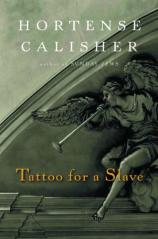Reading Group Guide
Discussion Questions
Tattoo for a Slave

1. Begin your discussion by considering Tattoo for a Slave as a commentary on the nineteenth-century American immigrant experience. Characterize the "Amerika" imagined, encountered, and defined in these pages by the author's various relatives.
2. What did you make of the somewhat unorthodox writing style of Tattoo for a Slave? One reviewer noted that "language, with its potential to be playful, evocative, elusive, nuanced, and shocking, is the real star of [this] book." Would you agree? Explain the strengths and weaknesses of this author's style.
3. In looking back on her early job as a welfare investigator in Depression-era New York City, Calisher wonders whether all writers are, in effect, investigators: "[Am I] 'the investigator' still? Should writers have to accede to a general sobriquet, I suppose that would not be the worst." If this is the case, what subjects or topics are investigated in Tattoo for a Slave? And how successful are these investigations? Explain.
4. Identify the Abrams sisters. Who are they? How do they fit into Calisher's story? Where are they from, and what do they do for a living? And how does Calisher ultimately seem to regard them: admiringly, endearingly, mockingly, disparagingly, otherwise? Quote from the text in support of your answers.
5. Discuss the following conflicts, each of which might be a paramount concern herein: emigrated Germans vs. transplanted Southerners, household breadwinners vs. in-law borrowers, war veterans vs. draft dodgers, truth vs. memory, love vs. responsibility, and the family/heritage we are born into vs. the life/identity we make for ourselves. How, if at all, do these conflicts achieve resolution over the course of this book?
6. One of the primary themes in Tattoo for a Slave is the ongoing series of intersections between ancestry and history, between one's place in a family and one's place in time. Discuss the War Between the States, in particular, as such an intersection. How, if at all, was your own idea or impression of "the waw" affected by Calisher's book? What about World War I? And World War II?
7. Explain the relevance of this key phrase from Calisher's memoir: "I can buy you and sell you." Identify the two scenes where this insult is spoken, highlighting not only the speakers of this remark--and the addressees--but also the links between these two scenes' characters, situations, moods, and outcomes.
8. The two most important characters in Tattoo for a Slave, after Calisher herself, are most likely her mother and father. What traits does the author seem to have inherited from each of them? Be specific, describing each of her parents in some detail while considering matters of behavior, culture, emotion, upbringing, intellect, creativity, style, faith, manner of speaking, appearance, women's rights, and so forth.
9. Why do you think Calisher wrestles with the difference between biography and autobiography as her book draws to a close? And what answers does she arrive at? What, in her view, ultimately distinguishes these genres? Or can't they actually be distinguished?
10. Explain the religious self-interrogations and far-flung spiritual/philosophical/environmental meditations that surface in the final pages of Tattoo for a Slave. Where does this author stand in terms of religious faith? What is it that triggers Calisher's late-breaking faith-grappling? What ignites these musings and what keeps them lit, burning, aflame? To what extent are her musings resolved--or do they simply keep spreading like wildfire?
11. Discuss the structure of this book--its form, its arc. Overall, how did the design or trajectory of Calisher's memoir influence your take on the book? What similarities or connections can you see between the story that Calisher tells in Tattoo for a Slave and how she tells it--that is, between content and form?
12. What does Calisher find in the telltale envelope that she extracts from her family's safe-deposit box in the last several pages of the book? And why does she then try "to force [herself] in" to this envelope? What does she mean by this? Why is she persistently grappling with this envelope as her memoir comes to a close? Finally, explicate this crucial passage from the book's last pages, where Calisher addresses the reader directly: "Would you care to try out your envelope? You'll have one. Not a family who don't."
13. What meaning(s) can you ascribe to this book's title? Focus on the "tattoo" metaphor in particular, but also explore the connotations of "slave" (and "slavery") that are played and replayed throughout the book.
Tattoo for a Slave
- Publication Date: November 1, 2004
- Hardcover: 336 pages
- Publisher: Houghton Mifflin Harcourt
- ISBN-10: 015101096X
- ISBN-13: 9780151010967






